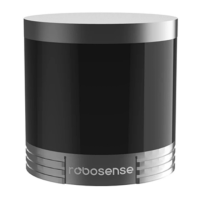Why is there a blank region rotating in the cloud data when using ROS driver with RoboSense Accessories?
- CChristopher MasseySep 13, 2025
This is a normal phenomenon when using the ROS driver with RoboSense Accessories. The ROS driver uses a fixed packet quantity to divide the display frame, so the blank region data will output in the next frame.


